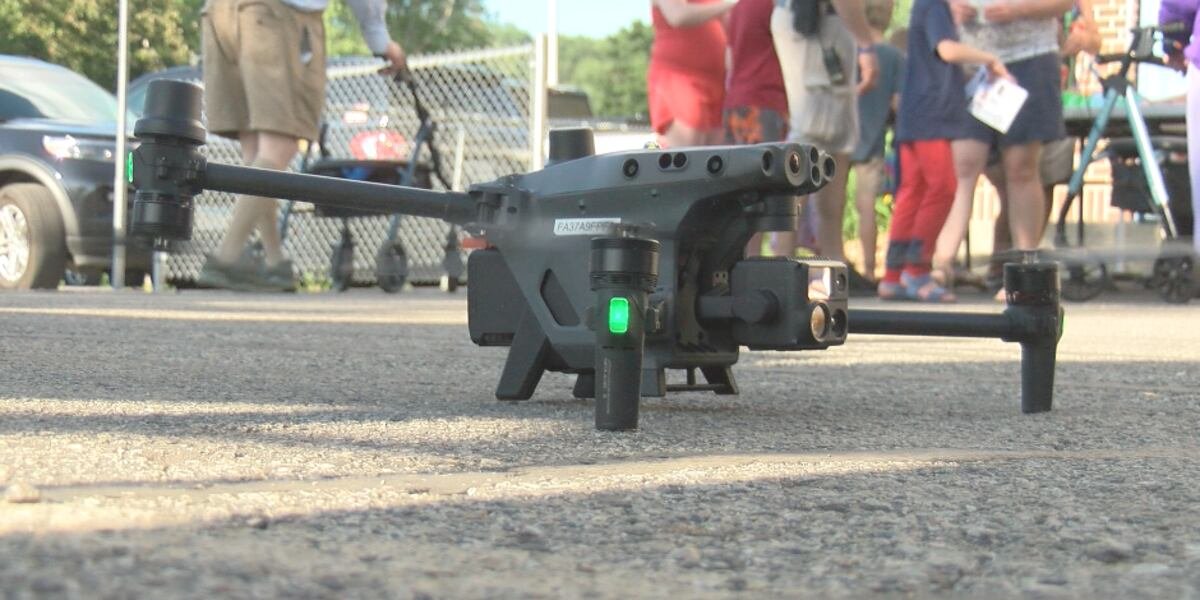Texas officials say more than 160 people still missing from floods that killed over 100 others
KERRVILLE — Search and rescue teams are looking for 161 missing people in Kerr County, possible victims of the July 4 Hill Country flood whose death toll has climbed to 109 victims, according to an update from Gov. Greg Abbott on Tuesday afternoon.
“We will not stop until every missing person is accounted for,” said Abbott, who toured the areas impacted by the flooding Tuesday.
Abbott added Tuesday that five children from Camp Mystic and a counselor were among the missing. One child who was not associated with the camp is also missing, he said. Twelve other people throughout the state are still missing, as well.
The flood is already among the deadliest natural disasters the state has seen, and it is so far the second deadliest flood after the 1921 flood in San Antonio, which killed 215 people. The Hill Country flood death toll is higher than the total number of flood-related deaths recorded across the country last year, along with the year before.
Among those killed were 27 campers and counselors from Camp Mystic, a summertime Christian retreat for generations of Texas girls. The camp’s director, Richard “Dick” Eastland, also died. Five campers and a counselor were among the missing Tuesday.
Until Tuesday’s update, only 25 people were reported missing across the region. A local government official said Monday it was still “a lot” after days of search and rescue operations. Those searching said they have been dealing with prank calls, false tips and rugged terrain across a roughly 60-mile area.
[Hills, rivers and rocky terrain: Why the Hill Country keeps flooding]
First responders in the Hill Country continued their search for bodies through Tuesday in the aftermath of the floods as hopes of finding survivors dimmed.
At least seven people died in Travis County, six in Kendall County, three in Burnet County, two in Williamson County and one in Tom Green County.
Abbott said that state House and Senate committees will form as early as later this week to investigate “ways to address this” ahead of the special session set to start on July 21. Abbott did not provide further details into what the committees will be investigating, but responded to a reporter’s question of who to point blame to as “the word choice of losers.”
“The losing teams are the ones that try to point out who’s to blame,” Abbott said. “The championship teams are the ones that say, ‘Don’t worry about it, man, we got this.’”
“The way winners talk is not to point fingers, they talk about solutions. What Texas is all about is solutions,” he later added.
As he spoke, helicopters hovered above and trucks drove by, working to search for both victims and possible survivors, and clearing out debris.
“It’s extremely treacherous,” Ben Baker, of Texas Game Wardens said of search efforts during a news conference earlier Tuesday, adding that his team has searched at least 26 miles of the river. “We’re having to go layer by layer peeling these off to make these recoveries.”
Tanner Jacobs is among the hundreds of first responders that have been wading through muddy ground and layers of debris along the side of the Guadalupe River to look for bodies and victims’ keepsakes.
“As bodies are found, we’ve been responding … That has slowed down,” Jacobs, who is part of a recovery strike team out of the governor’s office, said Tuesday. “We’re thinking that what may be left are going to be up underneath these piles of debris. So we are waiting for people to turn up.”
The search team has had to use heavy equipment. It is like this for miles along the river: Excavators pick up log jams, first responders and volunteers sift through it for signs of life.
Jacobs was supposed to go home Monday. But he told supervisors at his regular job he couldn’t leave, not yet, not while families were still desperate for their girls to come home.
Amid search and rescue efforts, Kerrville Mayor Joe Herring Jr. said Monday he cannot get over the response to help the city and surrounding areas after the flood. He said he wants everyone to know how thankful he is for all the first responders and volunteers. Nearly 1,000 people have come to Kerrville as either first responders to help the search-and-response teams or volunteers to help those displaced by the flooding, he said.
“These are not just guys with a pickup and a chainsaw,” Herring said. “They are trained professionals who are here doing a grim job.”
President Donald Trump is also planning to visit the region on Friday to tour the damage, which one estimate placed between $18 billion and $22 billion in destruction and economic losses.
Amid the tragedy, attention has turned to measures that could help prevent similar disasters in a region prone to flash floods. The flash floods raised questions about whether people in the area had received adequate warning. Local and state officials have said that National Weather Service forecasts did not accurately predict the intensity of the rainfall.
Camp Mystic had an emergency plan for disasters, including flooding, according to a state inspection conducted just two days before the floods.
Youth camps in Texas are inspected annually by the Department of State Health Services.
Each camp is required to develop procedures for disasters. DSHS inspectors only check to see that a camp has a plan but does not retain a copy of it, according to Lara Anton, a spokesperson for DSH.
“The plans are also required to be posted in all buildings,” she said.
No state agency regulates the effectiveness of these emergency plans. It is not clear exactly how those plans are communicated to campers or if Camp Mystic’s orientation schedule involved such instructions after they arrived.
Lt. Gov. Dan Patrick, the state’s second-in-command, said Monday that “there should have been sirens here.”
The New York Times reported over the weekend that there was hesitation from locals to spend money on such a system because of the high cost. “Taxpayers won’t pay for it,” Kerr County Judge Rob Kelly told the Times.
“The state needs to step up and pay for these,” Patrick said on Fox News. “Had we had sirens along this area, up and down — the same type of sirens that they have in Israel when there’s an attack coming that would have blown very loudly, it’s possible that that would have saved some of these lives.”
Abbott has suggested lawmakers might address the issue during an upcoming special legislative session set to begin in two weeks. Patrick said the sirens must be in place “by the next summer.”
State Sen. Paul Bettencourt, a Houston Republican, said Monday that he intends to introduce legislation to create a system of alert sirens for flash flood–prone river valleys.
“We are going to combine ‘old-tech’ sirens (emergency alert overrides that can’t be turned off) with ‘new-tech’ to alert Texans to get to higher ground,” Bettencourt wrote on social media. “It’s time to go back to what worked and still does in Tornado Alley, civil defense sirens.”
In Washington, D.C., White House Press Secretary Karoline Leavitt defended the National Weather Service’s meteorologists, telling reporters that they had “executed timely and precise forecasts and warnings.”







